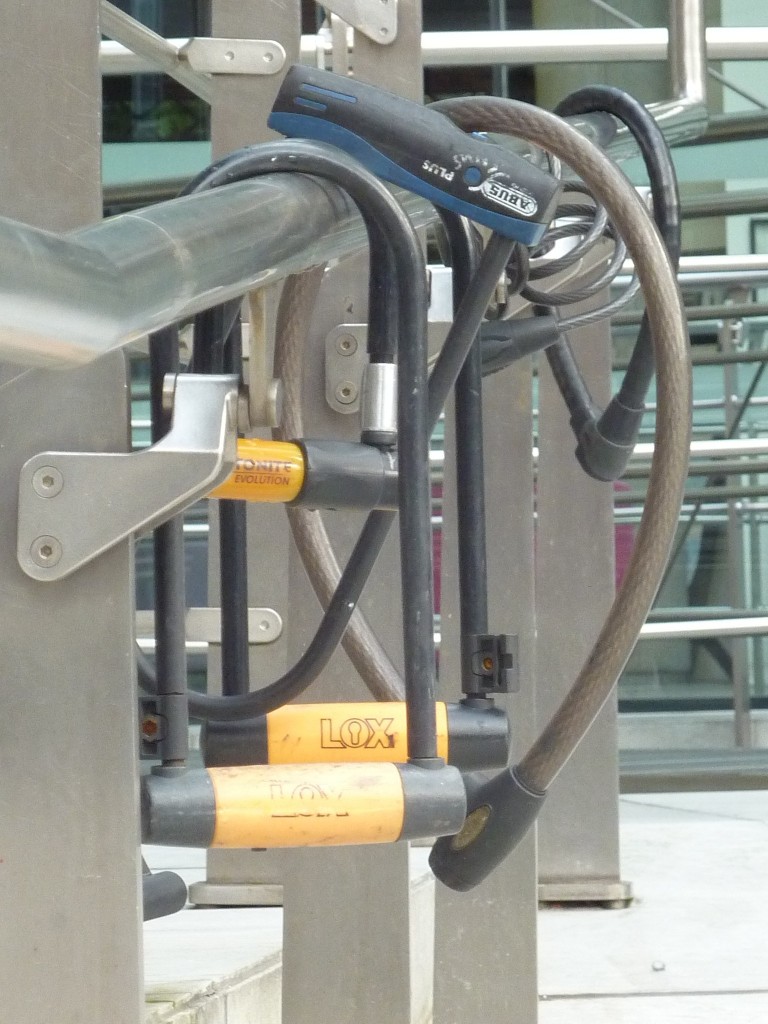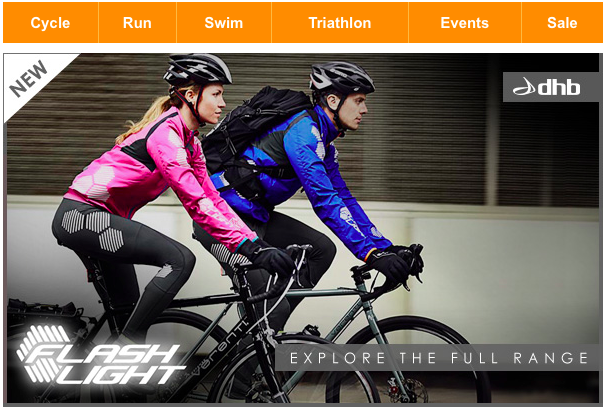Following on from my recent experience of having to cut a jammed lock to free up our bikes, I’m clearly in the market for a replacement lock. The last thing I want to do is be in the position of “locking the stable door after the horse has….”. As with all of these things there is a bewildering range of locks to buy for all kinds of situations. Here’s a few thoughts of things to consider, before launching into a look at the different kinds of lock available.
Do bikes really get stolen these days?
Yes they do, unfortunately. When I were a lad, a bike used to get stolen by someone who may have missed a bus and then the bike would be found the next day two miles further down the road, with no harm done. Bicycles nowadays are desirable commodities that can be lifted by some scallywag raising money to deal with other pressures in life.
Decent bike = laptop computer = someone’s wallet = drugs for a day or two
Sometimes a bike maybe stolen in an opportunist way i.e. you leave it outside a shop for one minute and then it’s stolen by someone who acted on impulse. The other extreme is a targeted theft by someone who knows what they’re after, knows exactly how to sell it and knows exactly how to cut through a lock quickly.
Where do you keep your bike?
If your bike is kept securely at home and just used for a ride where you seldom leave it anywhere, such as a weekend spin in the countryside and then straight back home, you probably don’t need to worry too much. If on the other hand you leave it at a railway way station while you commute to work each day, you already know it might be extremely vulnerable although it has to be acknowledged some bike parking facilities are improving these days.
Even at home, we all need to give some thought to making sure our bikes are secure in garages, sheds or other out-buildings.
Simple locks, cafe locks

Abus CombiFlex 202 90cm
There are a few of these compact locks around which are useful for “low risk” situations. Ideal for when you’re popping into a shop, or a cafe, with the bike left in a public area. With the compact size, it is barely any bigger than a mobile phone and will easily fit into a saddle bag or a pocket. They will be enough to deter opportunist light fingered toe rags but not the well equipped version. This kind of lock is not too expensive, the Abus (pictured) is under £20 along with a handful of others.
Reviews written by people having this lock are pretty positive. People like it but acknowledge it isn’t the strongest of locks but still easy to use, convenient and well made.
Cable locks
These will come in different thicknesses and grades. I think they are reasonably user friendly with a coil meaning they are reasonably compact and yet can be long enough to go around both wheels and a lamp post, possibly even locking two bikes together. Cables are also useful for running through the slots in your helmet.
There’s quite a good choice everywhere of different lengths and a choice of key or combination numbers. I can’t help but be a little wary as it was this kind of lock I cut through without too much difficulty. The wire cable was surrounded by rubbery plastic which was just as thick.
To make the choice a little wider, in case the already bewildering selection at Wiggle etc isn’t enough, you could buy a cable with a separate lock. That could be quite a versatile solution?

Abus Numero 1300
Examples such as the Abus Numero are fairly common and economical. Not that I’m an experienced safe cracker, I hasten to add, these are not impossible to unlock by a thief with a little patience. A well seasoned bike thief wouldn’t be fazed by a simple combination lock and they wouldn’t even need to carry any tools!
D-Locks
These are strong, more bulky, heavy and secure. They are ideal for locking the frame to something solid. Cost-wise basic versions are around £20 and go up to well over £100 for something pretty solid, upmarket and secure. Makes such as Kryponite have a good reputation for making locks that will resist bolt cutters, hack saws etc and they’re designed to be user-friendly – even including a little LED light in the keys (and how cool is that?).
As good as these are, unless you go for a larger size I think they are sometimes awkward in locking a bike frame to something – but they are excellent for locking a wheel and the frame, so that’s why it’s good to consider getting a closed loop cable to use with it. After all, what’s the point of having a great lock and the whole lot is just picked up, thrown into the back of a van and never seen again? Probably also a condition of an insurance policy as well.
Keys versus combination numbers
The general perception is that key locks are better than combination locks. Like anything, you get what you pay for. While security is the main thing with locks, there are a few other things to consider.
To a certain extent, whether you go for a key or combination lock depends a bit on your personality, your ability to remember a number or to lose a key. In our family it makes sense to have a combination lock as I know my children can remember a number but aren’t quite old enough to take complete responsibility for a key.
Besides, if you’re out on a day ride or having a credit card cycle tour, a bunch of keys can weigh you down.
What about my wheels, man?
You can replace quick release skewers with allen key bolts, this will stop your costly wheels from being stolen even if your bike is secure. Come to think of it, you can use the same kind of approach to secure your saddle and seat post. How many times do you see a bike with no seat at a railway station? Answer – quite often!





 RSS – Posts
RSS – Posts